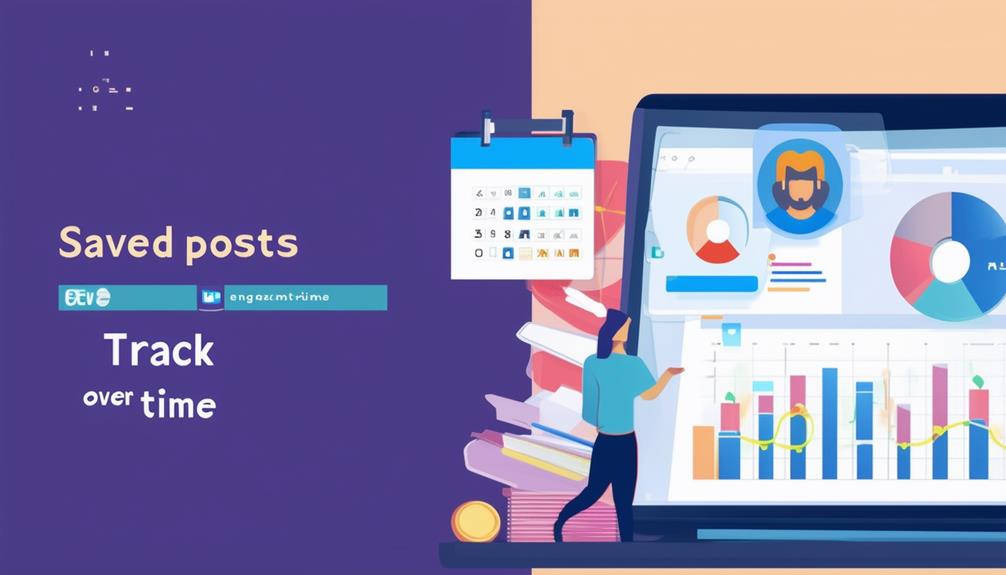
As you navigate through the vast pool of content on LinkedIn, you've likely encountered posts or articles that pique your interest but don't have time to engage with immediately. That's where the Save feature becomes your best ally. However, simply saving content without a strategy can lead to clutter and missed opportunities. By learning to categorize and prioritize your saved items, you'll not only keep your LinkedIn feed organized but also enhance your professional growth. Curious to see how a few simple tweaks to your saving habits can significantly boost your productivity and influence on LinkedIn? Let's explore these top tips together.
Understanding LinkedIn's Save Feature

LinkedIn's Save feature allows you to bookmark articles, job postings, and profiles for later review, making it a vital tool for networking and job searching. As you navigate through numerous posts and potential opportunities daily, it's easy to lose track of valuable information. That's where the Save feature steps in, ensuring you don't miss out.
You'll find the Save option on the bottom right of posts or directly on job listings. Once saved, you can access these items from the 'My Items' section under your profile tab. This is handy during your busy schedule when you stumble upon something interesting but don't have time to delve deeper immediately.
Using the Save feature wisely means you're creating a personal library of content that's tailored to your professional needs. Whether it's insightful articles that enhance your knowledge or potential job opportunities that align with your career aspirations, saving them helps you curate relevant resources without the clutter.
Organizing Saved Posts Effectively
Once you've accumulated a variety of saved items, organizing them effectively becomes crucial for maximizing their usefulness. You'll want to start by reviewing your saved content periodically to ensure it still holds relevance to your current needs. Set aside a dedicated time each week or month to go through your saved posts. This regular cleanup helps you stay on top of the content and prevents your save list from becoming overwhelming.
Consider categorizing your saves into distinct themes or purposes. For example, you might group items related to career development, industry news, innovative technologies, or inspirational stories. This grouping can be done mentally, or by taking notes elsewhere since LinkedIn currently doesn't offer a direct method for categorization within the save feature itself.
Also, it's helpful to prioritize the items. Decide which posts have actionable insights or those which are time-sensitive and should be addressed first. This prioritization ensures that you're not just collecting posts, but actively integrating valuable information into your professional life.
Leveraging Tags for Better Searchability

Introducing tags into your organizational system can significantly enhance the searchability of your saved posts on LinkedIn. By assigning relevant tags to each post you save, you're essentially grouping content into easily identifiable categories. This way, when you're searching for a specific post, you don't have to sift through a clutter of unrelated content; you can simply filter by the tag associated with the topic you need.
Think about the main themes or topics that are relevant to your profession or interests. You might use tags like "career tips," "industry news," or more specific ones like "SEO best practices" and "leadership seminars." The key is to keep your tags clear and consistent. If you start with "career_advancement," don't switch to "career growth" halfway through. Consistency helps keep everything streamlined.
Furthermore, don't overcomplicate your tag system. Stick to a handful of broad categories rather than creating a tag for every possible descriptor. This simplicity will make it quicker to tag new saves and easier to recall existing tags when you're in search of a particular post. Remember, the goal here is to save time and boost efficiency.
Regular Review and Cleanup
After setting up an efficient tagging system, it's important to keep your saved content manageable by regularly reviewing and cleaning up your collection. You've likely saved a mix of posts, articles, and videos that seemed vital at the moment. However, over time, some content may lose its relevance or become outdated. Scheduling a monthly or quarterly review can greatly enhance your LinkedIn experience and prevent information overload.
Start by reassessing the items you've saved under each tag. Ask yourself if each piece still holds value for your career goals or professional development. If it doesn't, don't hesitate to remove it. This not only declutters your saved section but also makes it quicker to access the most pertinent and useful information when you need it.
Additionally, consider the evolution of your professional interests and industry trends. What was relevant six months ago mightn't be as pertinent now. Updating your tags and saved content to reflect these shifts ensures that your LinkedIn saved items remain a dynamic, useful resource.
This regular cleanup will keep your professional toolbox sharp and efficient, directly aligned with your evolving career path.
Sharing Insights From Saved Content

Many professionals overlook the power of sharing insights from the content they've saved on LinkedIn, yet this can significantly amplify your visibility and influence in your network. When you share a piece of content with your own insights, you're not just reposting information; you're adding value by providing your unique perspective or analysis. This positions you as a thought leader in your field and sparks meaningful conversations.
To start, choose content that aligns with your industry and interests. Reflect on why it matters to you and your connections. What new ideas or strategies does it bring to the table? How does it challenge existing norms or advance knowledge in your field?
When sharing, craft a post that highlights these insights. Don't just share the link; add a personal comment that invites engagement. Pose a question, offer a critical viewpoint, or relate the content to a current project or trend.
Integrating With Other Tools
Integrating LinkedIn's Save feature with other productivity tools can significantly streamline your workflow and enhance your professional engagement. Imagine you're juggling multiple projects and need a way to organize your resources efficiently. By syncing LinkedIn's Save with tools like Trello or Asana, you can directly transfer valuable articles and insights to your project boards.
This setup lets you keep all related information in one accessible place, making it easier to reference and apply these insights to your tasks.
You can also leverage integration with calendar apps to schedule reading times for saved content. Linking tools like Google Calendar helps you carve out specific slots during your week dedicated to professional development and learning from saved articles. It's about making intentional space for growth without overwhelming your daily schedule.
Furthermore, consider using automation tools like Zapier to connect LinkedIn with your email platform or a note-taking app like Evernote. This way, you'll get automatic reminders or have summaries of important saved content pushed directly to your devices.
It's all about creating a seamless flow of information that supports your career development continuously without manual intervention. Integrating these tools not only saves time but also ensures you're consistently informed and prepared.
Tracking Your Engagement Metrics

With LinkedIn's Save feature, tracking your engagement metrics becomes straightforward and insightful. You'll gain a clearer view of who's interacting with your content and how your posts are performing over time. This tool allows you to see which articles, posts, or profiles you've saved resonate most with your network, offering a direct insight into what captures interest and spurs engagement.
Start by reviewing the analytics for your saved posts. Look at likes, comments, and shares to understand what content works best. Notice any patterns? Are certain topics or types of posts drawing more attention? This data is crucial for refining your content strategy to better align with your audience's preferences.
Don't overlook the demographics of your engagers. LinkedIn provides breakdowns by job title, location, and industry, helping you tailor your future posts to better meet the needs and interests of your audience. Adjusting your content based on these insights can significantly increase relevance and engagement.
Conclusion
By mastering LinkedIn's Save feature, you'll enhance your professional toolkit. Organize and tag your saved posts to make them easily accessible. Regularly review and clean up your collection to keep it fresh and relevant. Don't forget to share valuable insights from your saved content to amplify your influence. Integrating with productivity tools and tracking engagement metrics will further boost your efficiency. Start applying these strategies today to make the most of your LinkedIn experience and accelerate your career growth.






